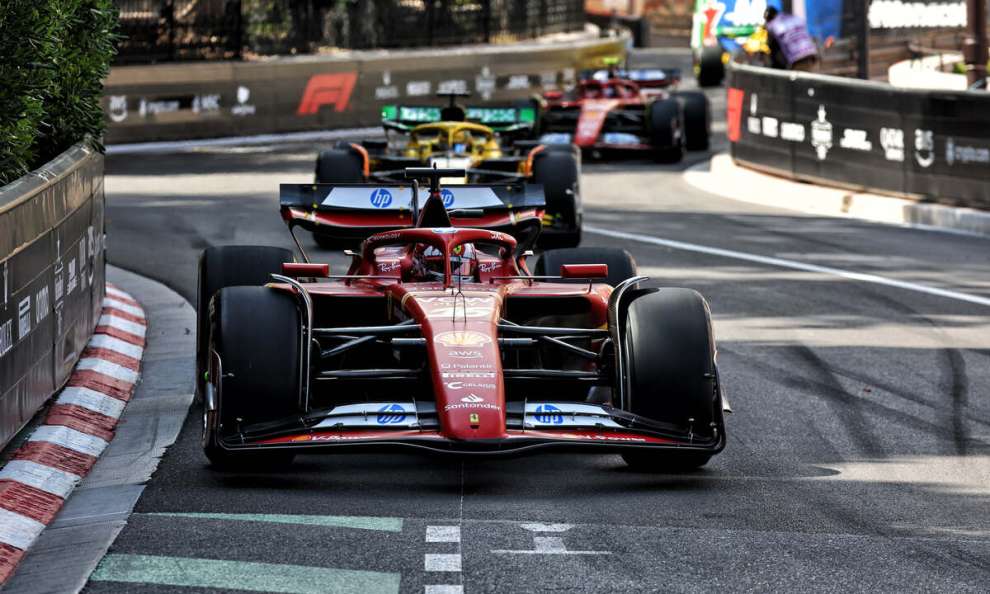By Carlo Platella
After a success like the one in Monza, it is easy for enthusiasm to take over in the Maranello environment. However, it must be remembered that in Brianza we haven’t seen a dominant Ferrari nor suddenly become the first force in the World Championship, but a Red capable of competing with McLaren. However, this does not prevent the Prancing Horse from having a fair amount of confidence ahead of the Baku and Singapore events, two tracks that lay good foundations for seeing a competitive Red once again.
Towards Baku
The newfound optimism at Ferrari is not linked to the updates introduced at Monza, for the evaluation of which we will have to wait until October, when the calendar will offer more representative tracks. The confidence rather derives from the characteristics of the next two events scheduled, where the race will be on urban tracks dominated by 90° curves and low speedwhere aerodynamic load and handling are less important than usual. Also decreasing in Azerbaijan is the risk of bouncing, to which Ferrari was particularly sensitive in the summer and whose definitive resolution has yet to be verified.
Baku stands out for its straights interspersed with slow corners, positioning itself as a stop & go track on a par with Bahrain and Canada, tracks not coincidentally united by an average qualifying speed of around 215 km/h. The abundance of ninety-degree corners and low mileage shifts the emphasis on braking but above all on traction qualities, area in which the Rossa has proven to be competitive for years. However, the medium and high speed bends are absent, which during the European season highlighted a certain delay of the Prancing Horse compared to its direct rivals.
Azerbaijan is also another track that requires a low aerodynamic load configuration. Ferrari and McLaren can count on new packages of rear wings and beam-wings introduced between Spa and Monza, unlike Mercedes and Red Bull who continue to use modified versions of the Jeddah wings, dating back to last March. Finally, in Baku there is often low tyre degradation, with the need to manage the rear axle in particular. In this, McLaren has nothing to envy the Scuderia from Maranello, which instead prevailed in Monza thanks also to better management of graining on the front axle.
The Monaco of Asia
In a week’s time it will be time to get back on track in Singapore, another street circuit dominated by slow corners and traction zones, where Ferrari is not afraid of the comparison with its rivals. The Asian circuit is the one that most recalls Monte Carlo, Grand Prix of which It is no coincidence that the Cavallino has won both of the last editionsi disputed. In Singapore the average lap speeds are significantly lower than in Baku, requiring a maximum aerodynamic load configuration. The main issue, however, is above all the kerbs and the road surface, which have many more bumps to digest than the Azerbaijani track.

At the end of May in Monte Carlo Ferrari emerged as the best car at absorbing bumps and dips at low speeds. At McLaren, the adaptability of the SF-24 was looked upon with envy, while Max Verstappen did not spare criticism of his Red Bull: “The car was like a go-kart, it jumped a lot, it didn’t absorb any kerbs, bumps or changes in slope.” The Prancing Horse’s superiority in this area, however, remains to be confirmed, given how the teams have updated the mechanics of the under-the-skin suspensions over the summer season. Qualifying will also be crucial for the hopes of victory in Singapore. With dedicated work, Ferrari was able to take pole position in Monaco, but overall the flying lap remains one of the least convincing areas of the SF-24.
The previous one
The positivity that can be felt in Maranello is therefore not the reflection of a Ferrari that has suddenly become the leading force, but rather of the awareness of having a package that fits well with the characteristics of Baku and Singapore. These are tracks on which the Prancing Horse does not start as a favorite, but with all the cards in order to compete with its opponents, also thanks to the excellent interpretation by the team and drivers seen in previous editions. The Canadian Grand Prix, however, is there to remind us that the premises of the eve are no guarantee of a positive result. In Montreal, Ferrari also encountered a track similar to its qualities, but the failure of the tires to ignite in qualifying compromised a weekend that was then definitively ruined by technical problems in the race.
#Ferrari #Baku #Singapore #Opportunities